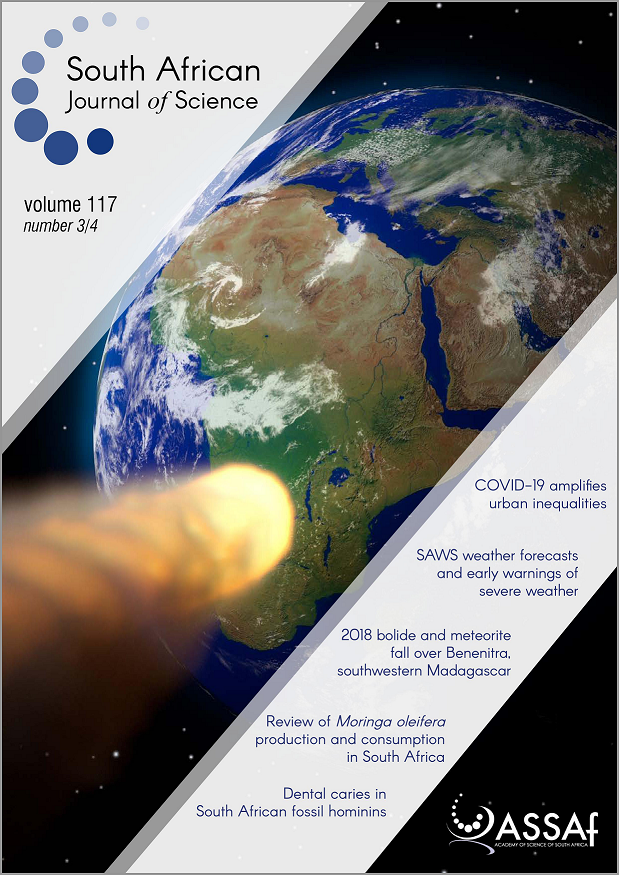Coombs Hill: A Late Devonian fossil locality in the Witpoort Formation (Witteberg Group, South Africa)
DOI:
https://doi.org/10.17159/sajs.2021/9190Keywords:
Famennian, high-latitude, fossils, plants, shelly invertebratesAbstract
Coombs Hill, a new fossil locality in the Witpoort Formation (Witteberg Group) of South Africa, preserves a record of Famennian (Late Devonian) life in Gondwana. Fossil plants collected at Coombs Hill are preliminarily assigned to several classes. Shelly invertebrates include a variety of bivalve mollusc forms, some of which appear to be preserved in life position. Biodiversity at Coombs Hill is comparable to that of the well-known Waterloo Farm lagerstätte in ordinal diversity, but exhibits differences in species composition. Ongoing taxonomic analysis will provide a rare window into the ecology of high-latitude environments during this pivotal stage of Earth history, which immediately preceded the end-Devonian extinction. Sandstone dominated sedimentary facies at Coombs Hill suggest a high-energy coastal marine setting, with brackish back-barrier estuarine/lagoonally derived fossiliferous mudstones. Exact stratigraphic placement within the Witpoort Formation is hampered by structural deformation, and precise age comparisons with Waterloo Farm are currently tenuous.
Significance:
- A new fossil locality at Coombs Hill comprises the second known site with a suite of well preserved continental and marginal marine fossils from the Witpoort Formation, providing an exceptionally rare example of high-latitude life during the critical latest Devonian Famennian age.
- Several new plant taxa will be diagnosed from this locality, which also gives important insights into the morphology of Archaeopteris notosaria, South Africa’s earliest known tree.
- Discovery of a second palaeontologically significant site in the Witpoort Formation provides impetus for further structural and sedimentary facies analyses to align the unit with datable global eustatic events, and to clarify its internal chronology.
Published
Issue
Section
License

All articles are published under a Creative Commons Attribution 4.0 International Licence
Copyright is retained by the authors. Readers are welcome to reproduce, share and adapt the content without permission provided the source is attributed.
Disclaimer: The publisher and editors accept no responsibility for statements made by the authors
How to Cite
- Abstract 879
- PDF 690
- EPUB 129
- XML 177












.png)